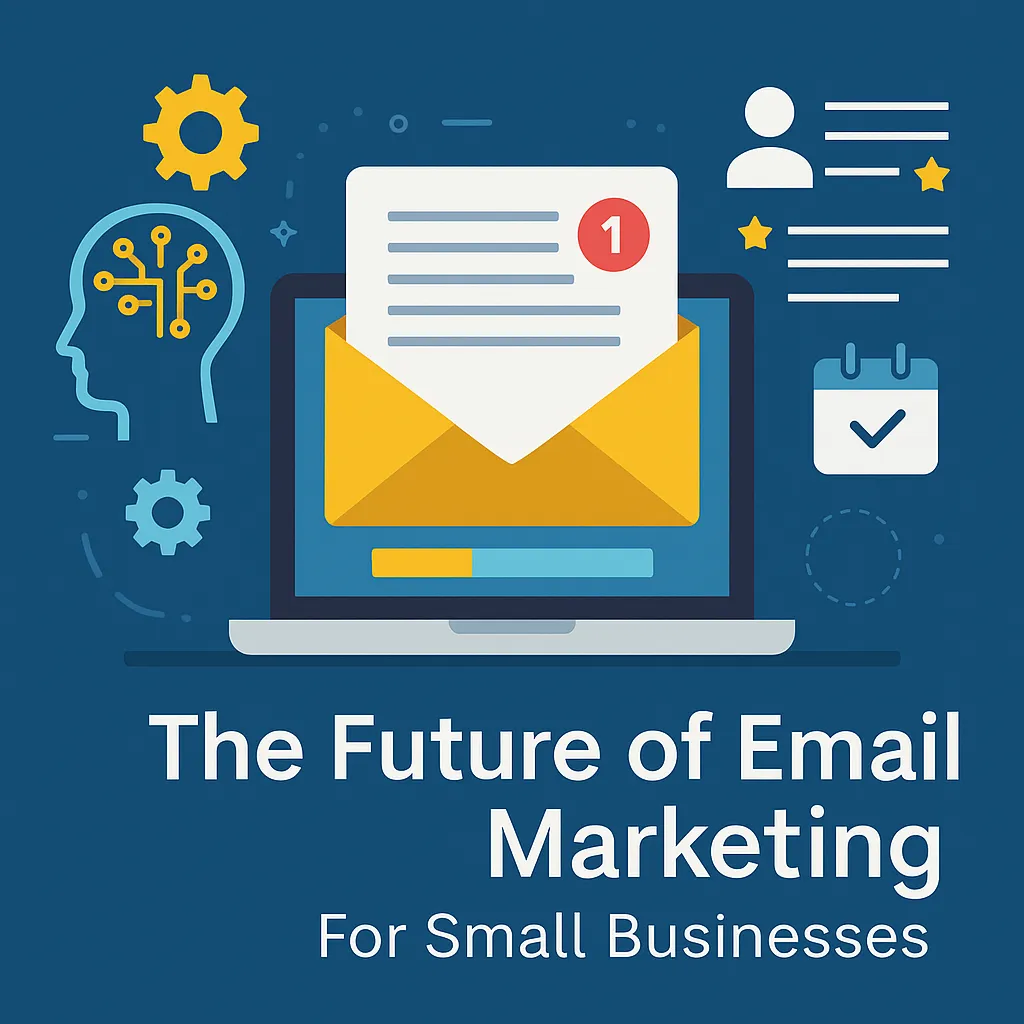
The Future of Email Marketing: How AI is Redefining Personalization and Automation for Small Businesses
Email marketing is far from dead—in fact, it’s getting smarter. With artificial intelligence (AI) stepping into the inbox, small businesses now have a powerful advantage: the ability to deliver personalized, high-impact messages at scale, automatically.
If you’ve ever wished your email campaigns felt more personal, were easier to manage, and actually delivered measurable results, this is your moment. Let’s explore how AI is transforming email marketing and what it means for small businesses ready to compete and grow.
Why Email Marketing Still Matters—And How AI Supercharges It
Email remains one of the highest ROI channels in digital marketing. According to HubSpot, email marketing can return $36 for every $1 spent. But the real secret behind those returns? Relevance and timing—and that’s where AI thrives.
AI turns what used to be guesswork into precision:
What to send ➤ AI analyzes user behavior to craft content that resonates.
When to send ➤ AI predicts the best times for individual users.
Who to send it to ➤ AI segments your audience based on real-time data.
Personalization That Actually Feels Personal
Moving Beyond “Hi [First Name]”
AI doesn’t stop at using names or basic segmentation. It can understand a user’s past behavior—such as what they clicked on, what they bought, or how long they lingered on a landing page—to generate truly tailored messages.
Example: A local gift shop uses AI to analyze customer buying patterns. A customer who purchased a baby shower gift gets a timely email recommending personalized children’s books or birthday gifts—resulting in a repeat purchase.
Dynamic Content Generation
AI can generate variations of email content based on recipient behavior or preferences, such as:
Subject lines tested in real-time
Product recommendations based on browsing history
Content blocks that swap depending on user tags or data triggers
Smarter Automation Without Losing the Human Touch
Workflow Automation—But Smarter
While traditional automation relies on if/then rules, AI-powered platforms go further by adapting workflows based on real-time engagement and predictive behaviors.
Example: If a user doesn’t open an email, AI reschedules a resend at a different time with a tweaked subject line. If a user clicks on a product, the next email offers a discount or complementary product.
Send-Time Optimization
AI can track when each subscriber typically opens and engages with emails—then automatically sends messages at their most active time, not just when you hit “send.”
Example: A fitness studio’s email newsletter used to go out at 10am. AI analysis revealed some customers were most engaged at 7pm. Adjusting send times increased open rates by 22%.
Real Business Results: Case Studies That Prove It Works
📦 Case Study: E-commerce Boost with AI Segmentation
A small online retailer implemented AI-powered email software that segmented users based on purchase frequency and browsing habits. They launched tailored campaigns, increasing open rates by 25% and conversions by 30%.
🍽️ Case Study: Restaurant Revenue Growth via Smart Timing
A neighborhood restaurant used AI to send promotional emails during slow hours. Personalized subject lines and automated coupons boosted traffic and increased lunch hour reservations by 20%.
Measuring What Matters: AI Analytics in Action
AI doesn’t just send emails—it evaluates them, too.
With AI-driven analytics, you can:
Monitor engagement patterns (opens, clicks, purchases)
Understand full customer journeys
Forecast campaign ROI and suggest adjustments
Improve future campaign performance with ongoing learning
Platforms like Mailchimp, HubSpot, and Sendinblue offer built-in AI dashboards to help even non-tech users make data-driven decisions.
Best Practices for AI-Powered Email Marketing
✅ Keep Your Brand Voice Human
AI can write—but you must guide. Make sure your tone aligns with your brand values and never feels robotic. Personalization should feel genuine.
✅ Start With Simple Segments
Begin with basic behavior-based segments—such as recent buyers, cart abandoners, or inactive users—and expand as you learn what works.
✅ Use AI to A/B Test
Let AI run multiple versions of subject lines, CTAs, or content blocks. It will learn which variations drive more results and optimize accordingly.
✅ Don’t “Set It and Forget It”
AI thrives on feedback. Regularly review performance data and tweak your approach.
✅ Balance Automation and Empathy
Even automated workflows should consider user intent and emotions. Always put the customer experience first.
Frequently Asked Questions
1. Is AI email marketing only for large businesses?
Not at all. Many affordable platforms like Mailchimp, Brevo (formerly Sendinblue), and Constant Contact offer built-in AI tools for small businesses.
2. Will AI replace my role in writing emails?
No. AI is a powerful assistant, not a replacement. It helps you brainstorm, test, and optimize—but your creativity, empathy, and strategy still lead the way.
3. What’s the easiest way to start using AI in my email marketing?
Begin with send-time optimization and basic behavioral segmentation—these features are built into most email platforms today.
4. Can AI help reduce unsubscribes?
Yes. By personalizing content and delivering value at the right time, AI helps you send relevant messages that keep subscribers engaged.
5. How do I measure success with AI email tools?
Look beyond open rates. Measure conversion rates, email-driven revenue, and engagement across your customer’s full journey.
Conclusion: A Smarter Way to Connect—and Convert
AI isn’t just a trend—it’s a toolkit. One that gives small businesses the power to create personalized, scalable, and efficient email marketing strategies without burning out.
From automation that adjusts in real time, to messages tailored to each user’s interests, AI helps you meet your audience where they are—at the perfect time, with the perfect message.
Ready to transform your email marketing?
👉 Start your AI-powered strategy today at MarketBlazer.ai
